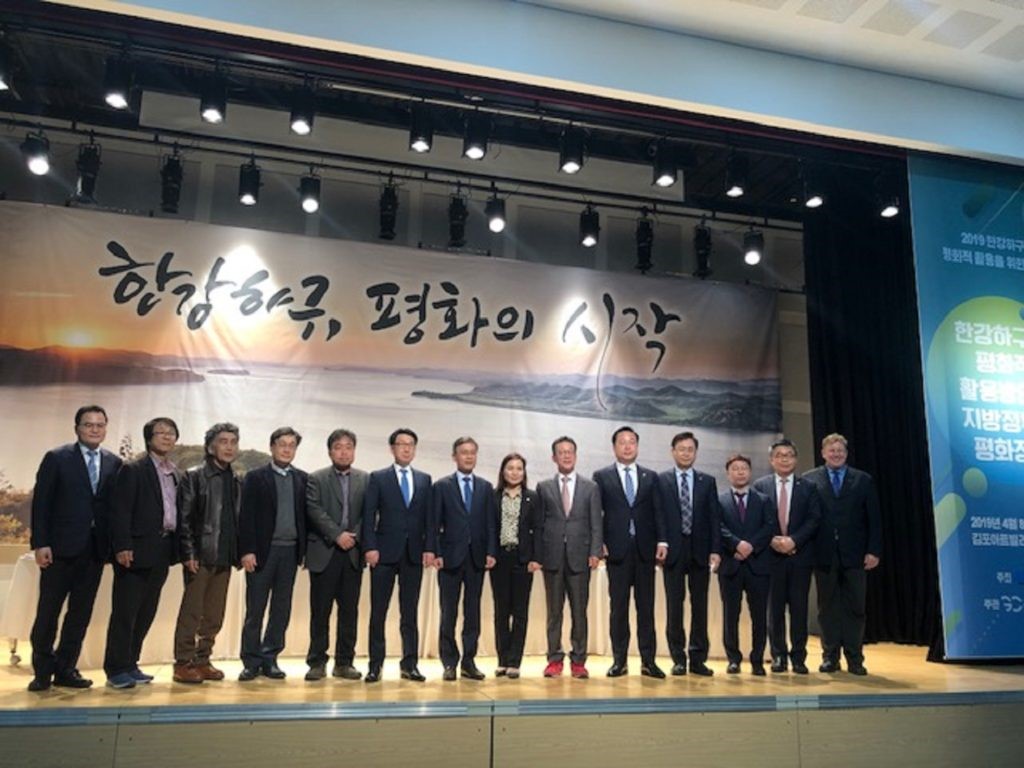The river Han is not only the largest and most important river of RO Korea, but also – in its Westernmost course and estuary – forms the border to DPR Korea, where tensions often flare. With the more peaceful mood on the Korean Peninsula since 2018, also plans for the peaceful use and development of the border area in this region, the Hangang estuary, have been discussed by the adjacent local communities, Gimpo, Goyang, Paju and Gangwho-do. It is however important to ensure that future development in the area is sustainable and allows for peaceful coexistence of people and nature. This is why in 2018 Gimpo city asked Hanns Seidel Foundation Korea to carry out an ecological survey of the border area around Yudo Island in the Han River.
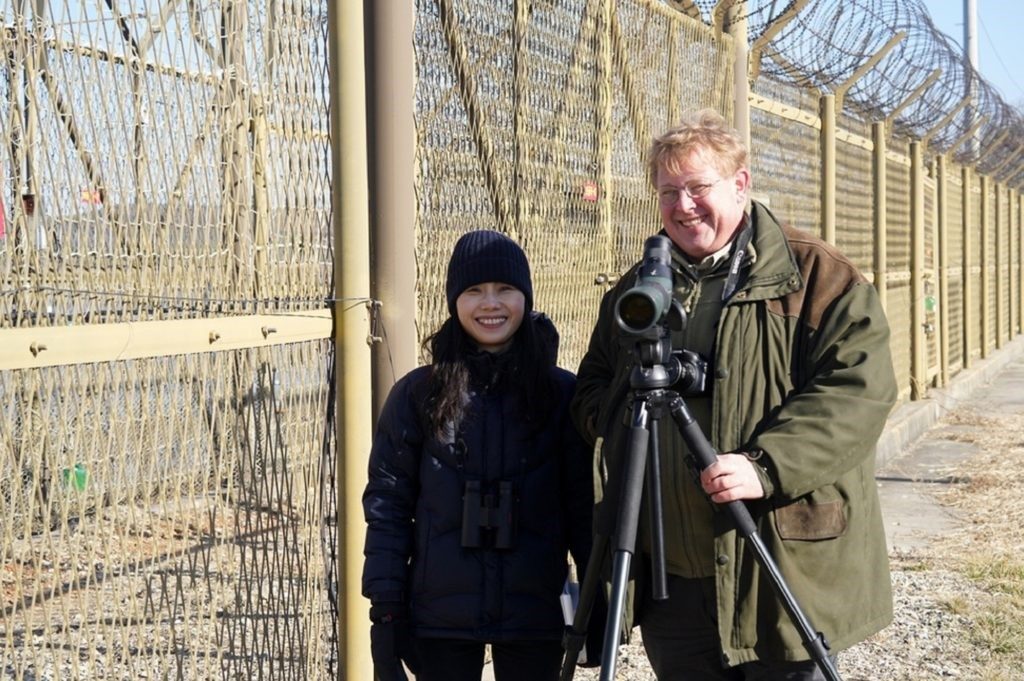
The main survey team: Dr. Choi Hyun-Ah, Dr. Bernhard Seliger (both HFS, Birds Korea) (Photo Credit: © Mr Park Kung Man)
Between late November 2018 and April 2019, Dr. Choi Hyun-Ah and Dr. Bernhard Seliger of Hanns Seidel Foundation (both also members of Birds Korea) carried out ten bird and ecological surveys in this area to document its importance, in particular that of Yudo Island, for migratory birds and develop ideas for protection of the area under changing political circumstances. For three surveys, they were joined by Dr. Nial Moores of Birds Korea, who also continuously served as a consultant to the project.
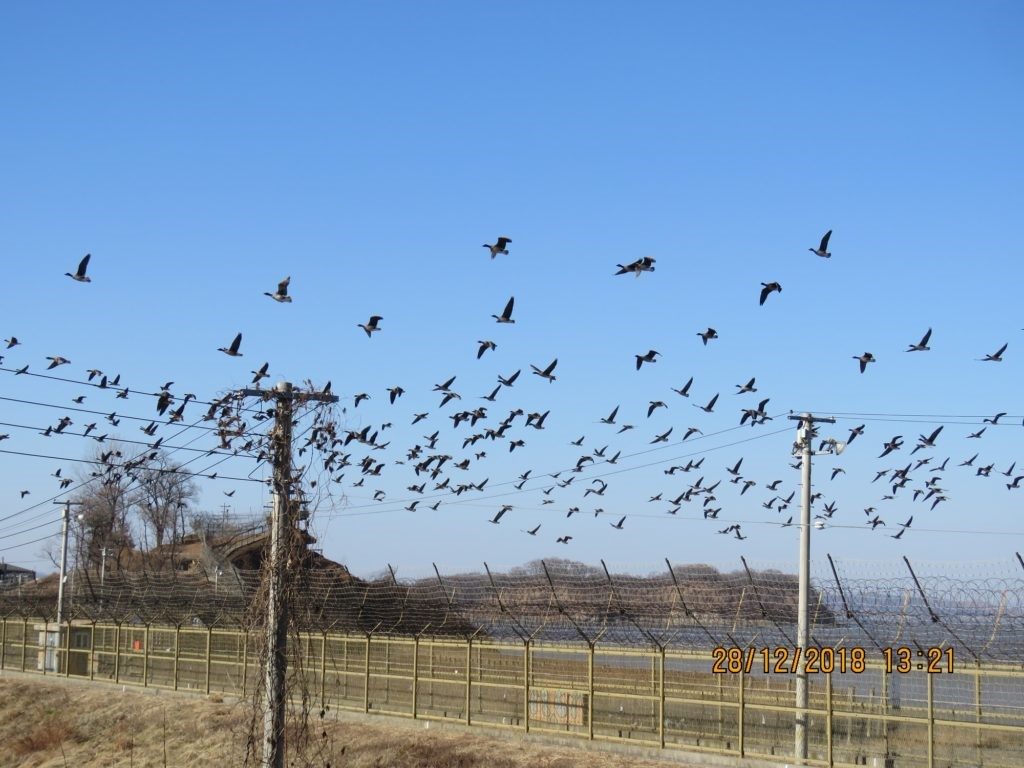
Geese overflying the border fence – “Birds don´t know borders.” (Photo Credit: © Bernhard Seliger)
The survey resulted in a confirmation of the importance of the area, in particular Yudo island, on the number of grounds: Yudo Island itself is one of the most important breeding areas for Great Cormorant, with around 580 occupied nests counted, but also Grey Herons, Great Egrets, and probably Black-crowned Night Heron and Black-Faced Spoonbill. Tags show that birds staying in the Yudo area frequently visit the opposite coast of South Hwanghae province in DPR Korea, confirming the truth that “birds do not know borders”.
The rice field areas around Yudo, the coastline as well as Siam are important wintering grounds for goose species. The most surprising finding was the use of the area during November and December of just over 1,000 Swan Geese, considered to be the largest flock seen in RO Korea in more than ten years.
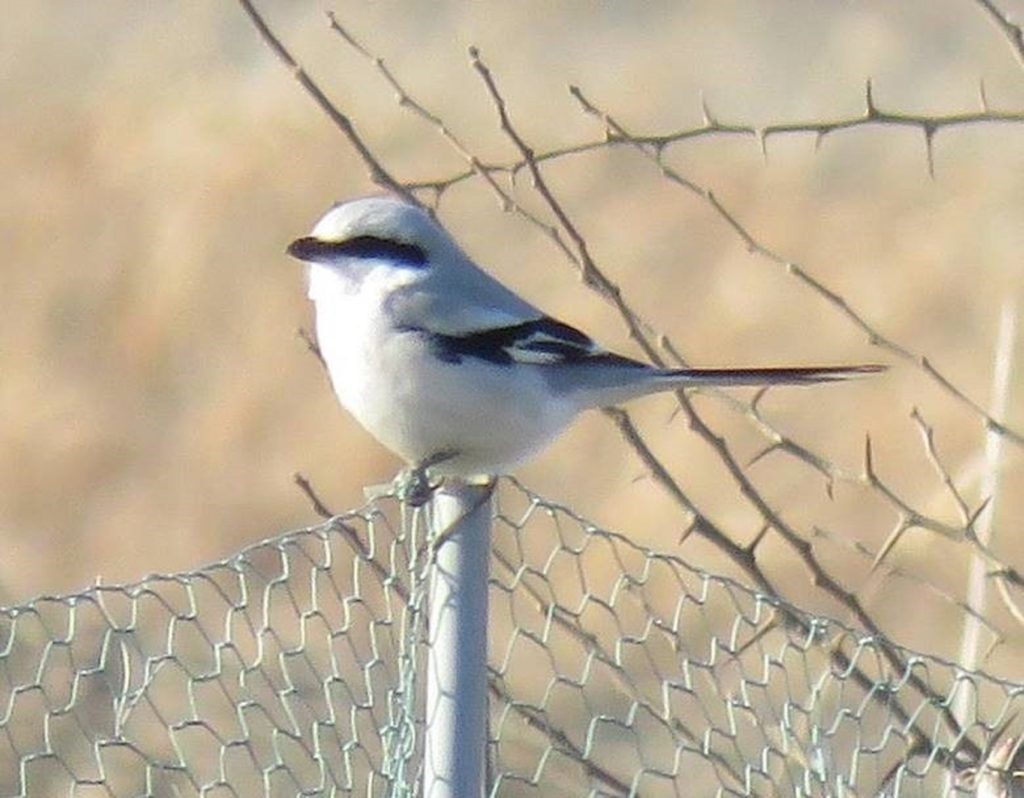
Chinese Grey Shrike (Photo Credit: © Bernhard Seliger)
The area was also visited by White-tailed Eagles throughout the winter, with up to 15 eagles counted along the Han River and in the adjacent forests. Once, also a Golden Eagle was recorded. Other raptors included Merlin, Peregrine Falcon, Cinereous Vulture, Hen Harrier and Northern Goshawk. At least one Chinese Grey Shrike (potentially more) was seen in the survey area throughout the winter, a beautiful winter visitor today very scarce in the South with the exception of the border area. During the spring migration, the area becomes an important staging area and stopover for a number of species, including thousands of geese, ducks and gulls. Notable species include Baikal Teal, Grey-faced Buzzard and Upland Buzzard. While there are still many places, where also small passerines can winter in ditches, along small waterways, and along the forests, the attempts by the Rural Administration to “beautify” the landscape by concrete trenches with steep walls – a death trap for many animals ending up in these concrete structures – can unfortunately be seen in many places.
The future of this area which is important for bird migration and bird wintering is open – while hopefully, rapprochement and ultimately peace will make the border obsolete, new plans for development will have to be balanced with the protection of birds in the area. Already today, independently from plans for future use, habitat improvements can be introduced on a small scale, like the re-introduction of vegetation like reed into the cleared and sterile trenches and the planting of wind-breaking hedges rich in biodiversity.
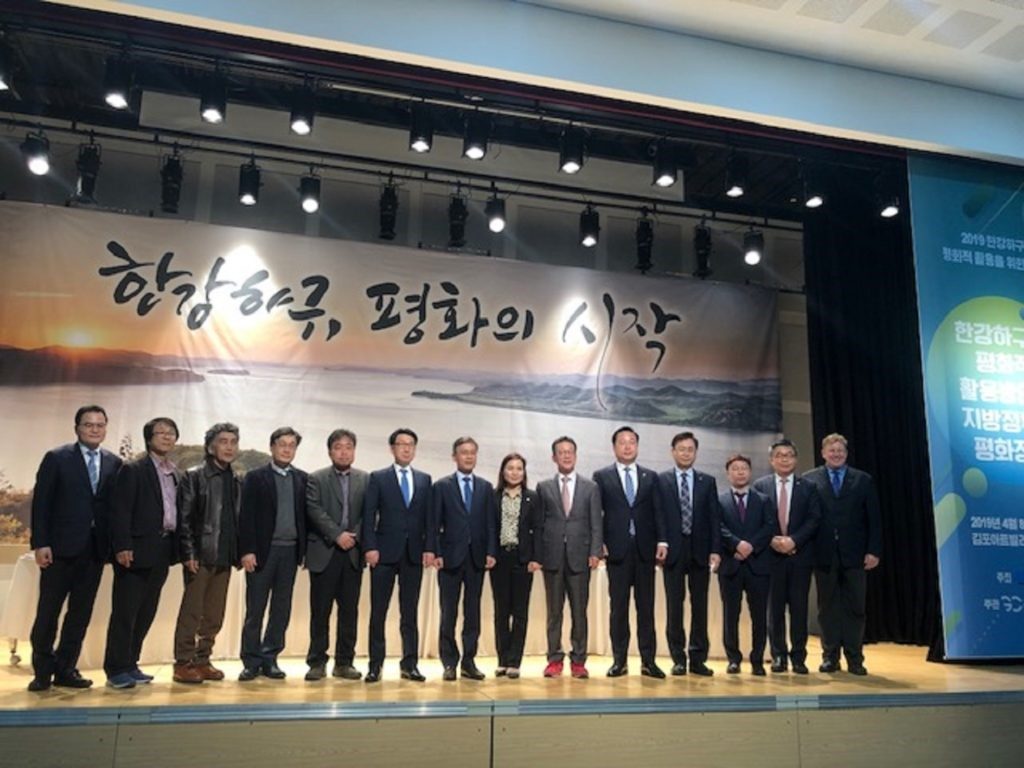
Politicians, public administrators, academics, researchers, NGO representatives discussing the future of the Han River Estuary (April 8) (Photo Credit: © Choi Hyun-Ah)
On April 8th 2019 a full-day forum took place in Gimpo, where local administrations, local politicians, experts for economic development and environmental protection participated and discussed the various perspectives of a sustainable and peaceful use of the Hangang estuary.
The first regular session was a panel discussion of development proposals for the Han River Estuary based on a recent boat survey of the area. Hong Seung-min of the Ministry of Unification, Lee Ki-Sup of the Korean Waterbird Network, Yoon Seung-yong of the Wild Bird Society of Korea, Kim Won of the Korea Institute for Construction Technology and Choi Dong-Jin of the Korea Research Institute for Environment and Development discussed their impressions of the boat tour and their ideas for sustainable development.
The second session, chaired by Prof. Im Tae-Seung of Inha University, looked into peaceful use and economic development versus environmental protection for the Han River Estuary. Dr. Bernhard Seliger of Hanns Seidel Foundation Korea presented results of eight surveys of the Yudo Island area of Han River Estuary. Like already mentioned above, the area hosts endangered species like the Black-Faced Spoonbill, and internationally important concentrations of birds like Swan geese. It is therefore necessary to protect the area. However, it might conflict with the idea to increase transport infrastructure in the area. It is important to allow economic development in places, where industry and population are already located, like the Nampo – Pyongyang – Kaesong – Seoul – Pyongtaek area but it is also important to preserve areas of ecological value. In the end Dr. Seliger put forward proposals for cross-border cooperation on nature protection between Gimpo and DPR Korea, including joint surveys of environmental assets.
More Articles on the Topic:
- The Peaceful Use of Hangang Estuary: https://korea.hss.de/en/news/detail/the-peaceful-use-of-hangang-estuary-perspectives-for-sustainable-development-news4527/
- Bird Migration in the Yudo islet area of Gimpo: http://www.birdskoreablog.org/?p=21872
- Some thoughts on the chances and threats of preservation of the Han River Estuary: http://www.birdskoreablog.org/?p=21812
- Half a year of surveys at the Han River Estuary around Yudo Island: http://www.birdskoreablog.org/?p=21801

